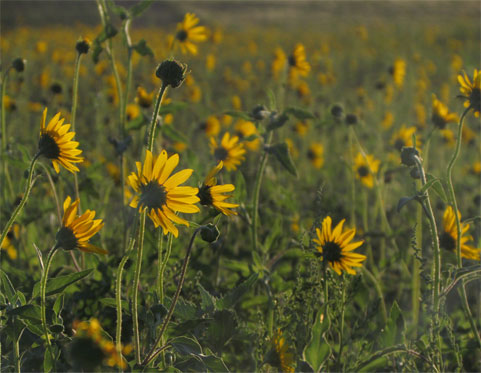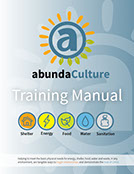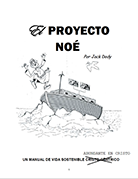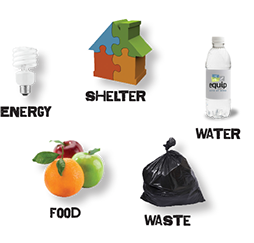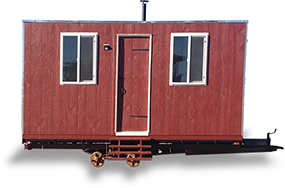(The following information comes from "Build Better Garden Soil" by Harvey Ussery, Mother Earth News, April/May 2007 pp.147-151. "Feed the Soil to Feed the Plants" by Doreen G. Howard, Mother Earth News, June/July 2003 pp.19-23.
What is Good Soil?
1. Good soil contains organic matter (humus).
2. Good soil is workable (friable), easily crumbled or pulverized.
3. Good soil allows oxygen to plant roots because it is friable and full of living organisms that create tunnels to the roots.
4. Good soil absorbs and holds water.
5. Good soil provides a home for a living community.
LIVING THINGS FOUND IN GOOD SOIL:
Algae
Bacteria, microbes
Mycorrhizal fungi
Protozoa (single-celled animals)
Nematodes (tiny, non-segmented worms)
Arthropods ( pseudo scorpions, mites, spiders, centipedes )
Earthworms
Mammals (moles, voles, gophers, prairie dogs, etc.)
NOTE: Most of the action for healthy plants takes place in the first 10-12 inches of soil around the root hairs of plants.
What Damages Good Soil?
1. Monoculture
2. Harsh chemicals (fertilizers, chicken manure, blood meal)
3. Too much plowing (exposes soil to sun scald. The living things in the soil are exposed to the sun and die.)
4. Uncovered soil (The rain pounds on the soil and makes it hard or washes it away. The sun scalds the soil and and kills the living community. The wind blows the soil away.)
5. Compacting (walking or driving on planting areas)
How Can Soil Be Improved and Protected?
1. Plow and till as little as possible. (Use raised beds, containers, low till methods, a broad fork.)
2. Compost, compost, compost! (This adds organic matter to the soil. The living community thrives on compost.)
3. Mulch (Use organic material to keep soil covered at all times.)
4. Use cover crops. (Peas, hairy vetch, alfalfa, rye, oats, beans, crimson clover, oil seed radishes [in clod climates], buckwheat, sorghum, etc.)
Source: Developed by Will Brinton, Dr. of environmental science, Woods End Laboratories, Mt. Vernon, Maine. From Mother Earth News, Feb/Mar 2011.
Why Liquid Fertilizers?
..faster acting.
..will work on young plants.
..works well for container plants with possible frequent feedings.
..good for cold-tolerant crops like spinach, strawberries, lettuce, broccoli, cabbage, etc.
How to Apply
..apply no more than every two weeks with a thorough soaking.
..use with longer-lasting solid organic fertilizers such as composted manures.
..apply to sweet corn in full silk.
..apply to pepper plants loaded with fruit.
..apply to young leafy plants.
..apply to cold-weather plants.
..apply to long-living plants such as chard and tomatoes. They will produce for a longer time.
..don't apply to drought-stressed plants. Water the plants first with pure water.
NOTE: If you apply liquid fertilizers to young plants you will encourage leaf growth. For example, you will have tomatoes with giant leaves and little fruit. Wait until fruit sets before applying liquid fertilizers to non-leaf crops.
Four Different Types of Homemade Liquid Fertilizers
1) chicken manure with wood shavings
2) seaweed
3) fresh grass clippings
4) urine
How to Make Liquid Fertilizer with Chicken Manure and Wood Chips
..in a twenty liter (5 gallon) bucket:
..mix 750 ml of dry chicken manure with two and one half liters of wood shavings.
..fill the bucket the rest of the way with water.
..let sit for 3 days, stirring each day.
..after 3 days, filter the mixture through a piece of cloth.
..dilute the mixture with an equal amount of water.
..use within a day or two.
NOTE: With all of the liquid fertilizers listed in these pages, use within a few days. Changes occur in the fertilizer over time that make it unfit for use. Put old fertilizer on the compost pile.
How to Make Liquid Fertilizer with Seaweed
..in a twenty liter bucket:
..place 4 liters of seaweed.
..fill the bucket the rest of the way with water.
..let sit for 3 days, stirring each day.
..after 3 days, filter the mixture through a piece of cloth.
..use within a day or two.
How to Make Liquid Fertilizer with Grass Clippings
..in a twenty liter bucket:
..place 13 liters of fresh grass clippings. Make sure no weed killers have been used on the grass.
..fill the bucket the rest of the way with water.
..let sit for 3 days, stirring each day.
..after 3 days, filter the mixture through a piece of cloth.
..dilute the mixture with an equal amount of water.
..use within a day or two.
How to Make Liquid Fertilizer with Urine
..in a twenty liter bucket:
..place one liter of urine in the bucket.
..fill the bucket the rest of the way with water.
..stir.
..use immediately or within a day or two.
NOTE: Urine is my favorite fertilizer. I simply put one gallon of water in a bucket and then pee in the bucket. I use the mixture immediately. My yields have increased by as much as 400 percent!
General Information
..most garden plants use three major plant nutrients: three parts nitrogen, one part phosphorus and two parts potassium.
NITROGEN encourages growth of new stems and leaves.
PHOSPHORUS encourages vigorous rooting.
POTASSIUM regulates water distribution within the plant.
..the most balanced fertilizers are grass clippings and urine.
Earthships 1,2,3 –Michael Reynolds
Internet resources for solar electric:
–Rex Ewing, Jeffrey R. Yago.
These guys offer ideas for very practical, smaller systems.
The Passive Solar House –James Kachadorian
Farming God's Way or Foundations in Farming –Brad Oldreive
Mission Wild –Don Richards
Rainwater Harvesting for DRYLANDS and Beyond 1,2 – Brad Lancaster
Permaculture –Bill Mollison
The Composting Toilet System
–David Del Porto and Carol Steinfeld
I get lots of cutting edge ideas from magazines:
Countryside
Back Home
Backwoods Home
Mother Earth News
Through wide-ranging research via the Internet, review of literature on sustainable living, and consultation with various missionary training organizations, I had the good fortune to discover Jack Dody. Jack has distilled over three decades of expertise in sustainable building practices, organic gardening, and renewable energy production an accessible manual that he has generously made available free of charge. Jack's manual is a comprehensive resource for appropriate technology, a unique compendium full of clear explanations, helpful diagrams, and practical advice.
–Allen C., Boston
See Jack's presentation below at the 2014 Redeeming the Dirt Conference.
Read a missionary blog about his solar training experience with Jack here>
Meet Andy Eash, our missionary-in-training, who has designed and built a number of solar energy projects.
DONATE
